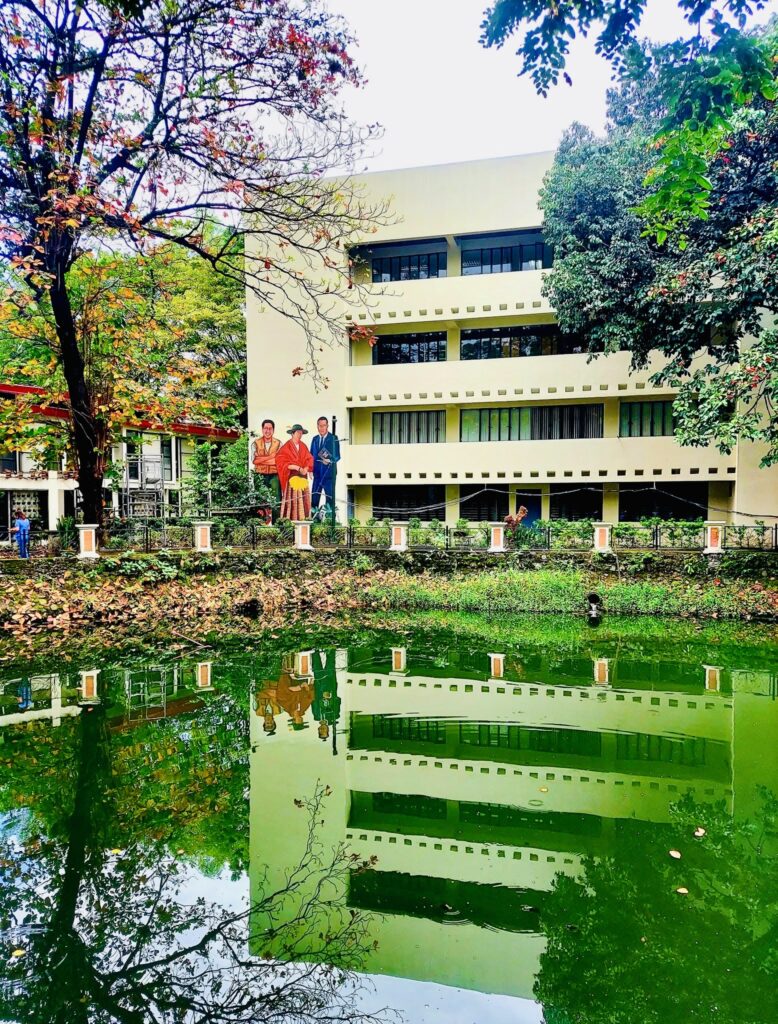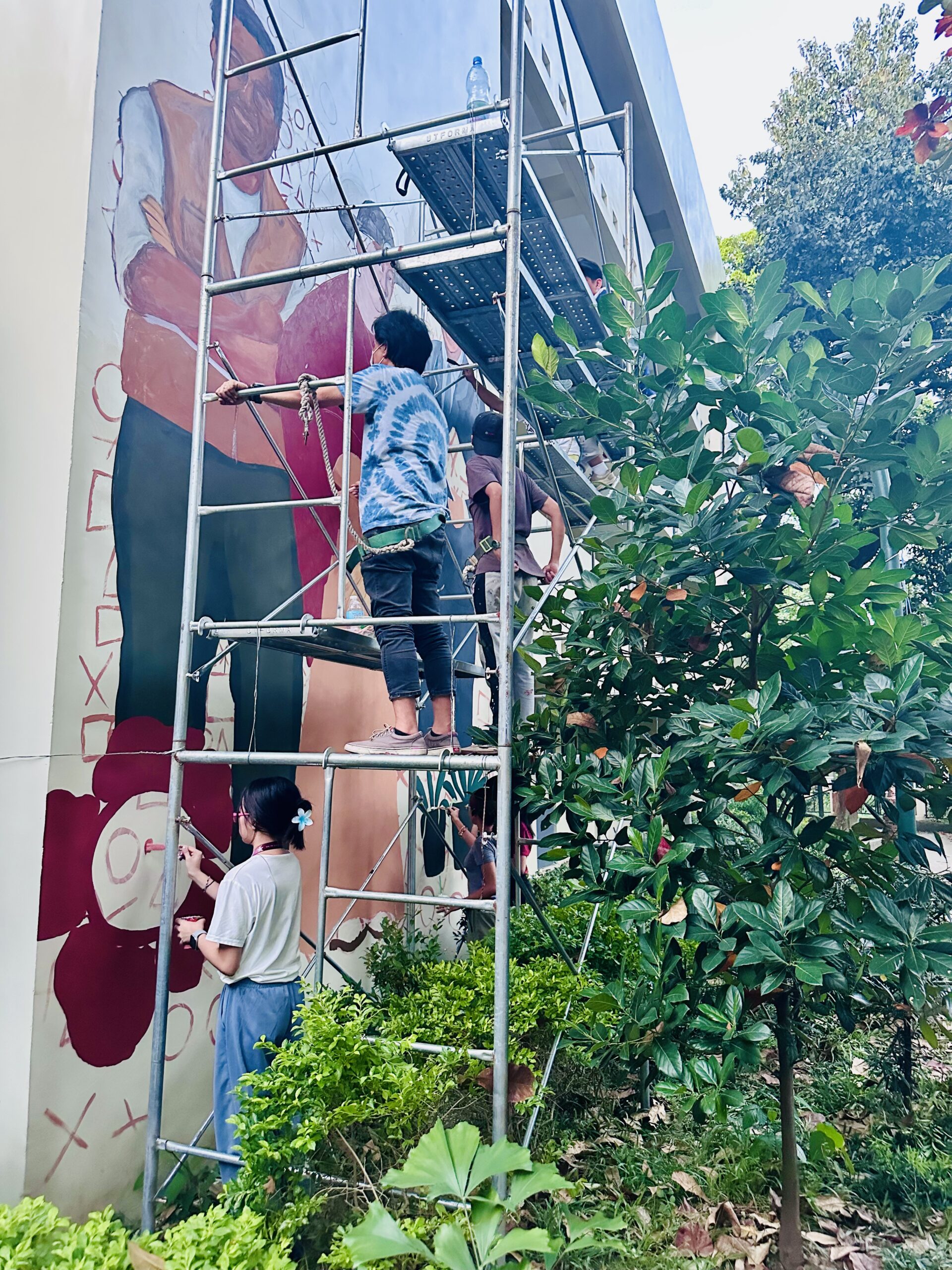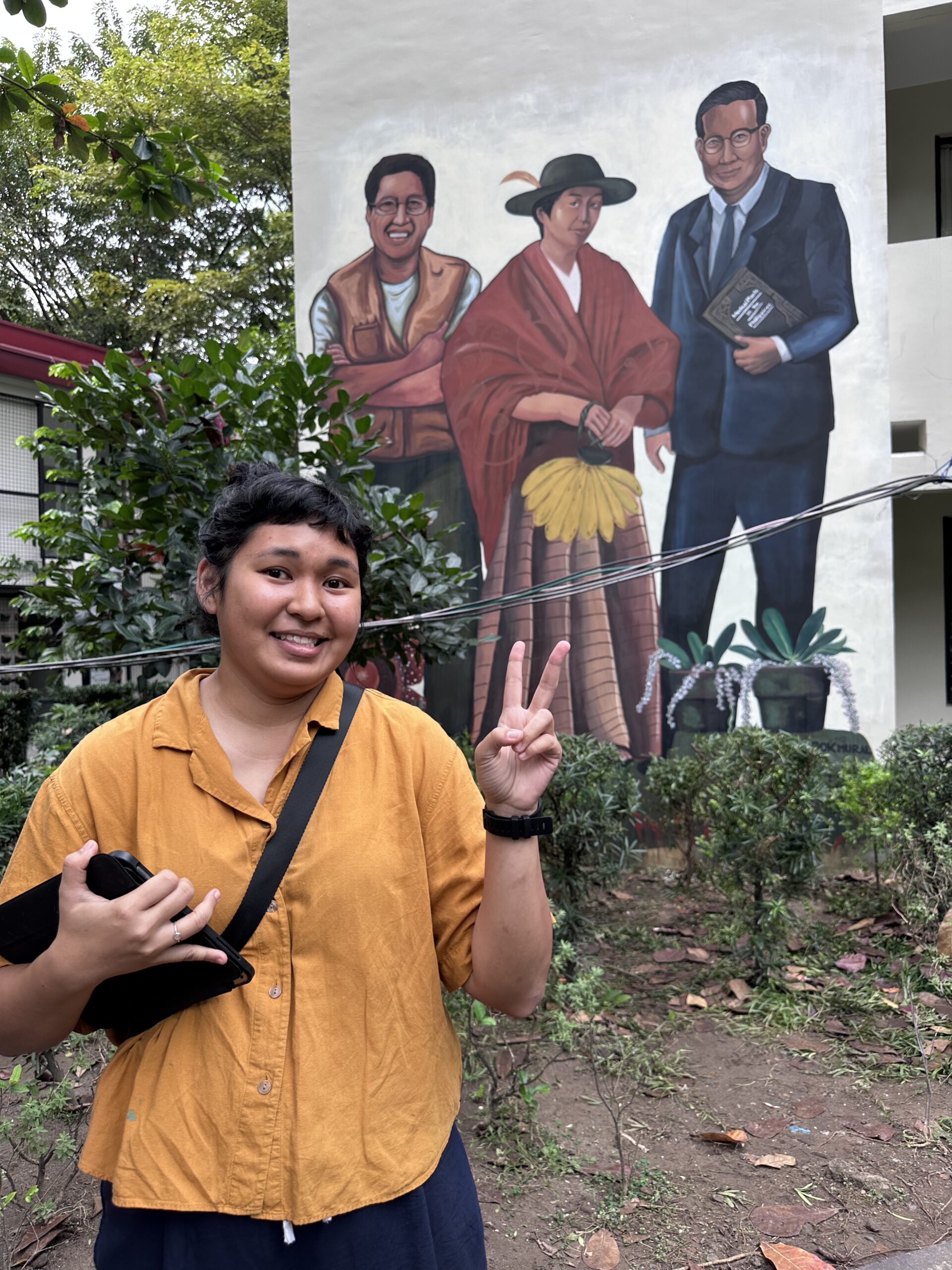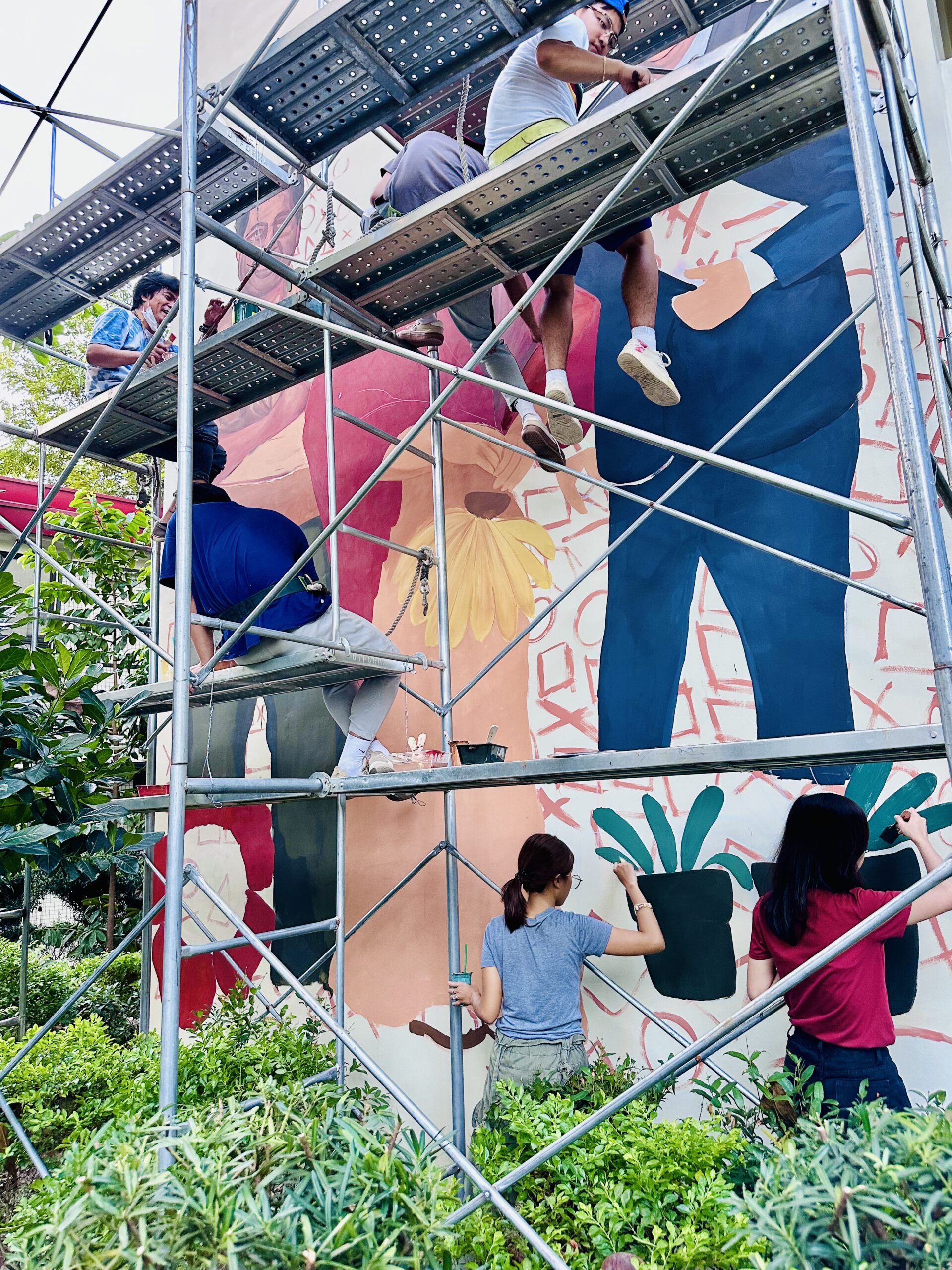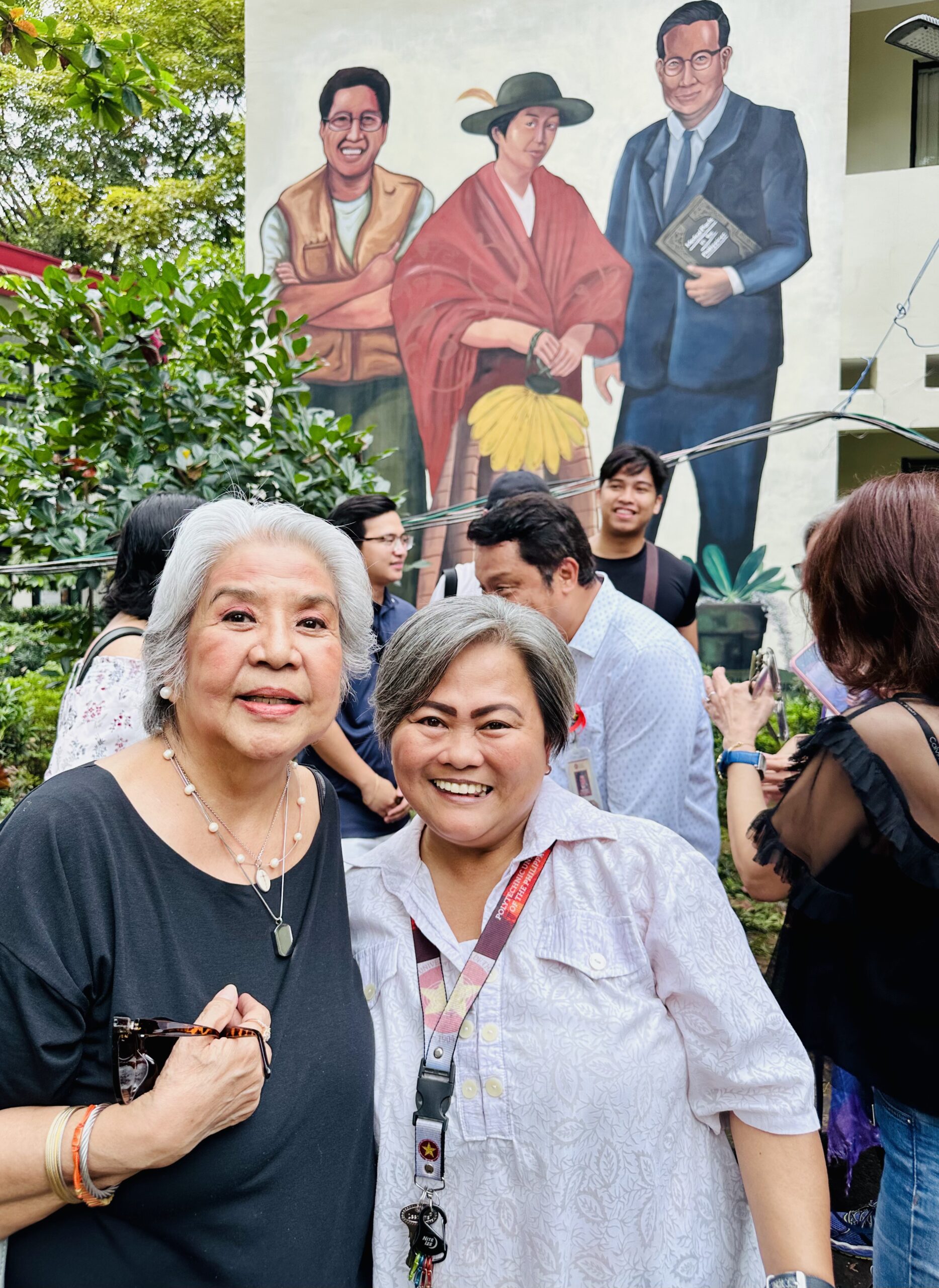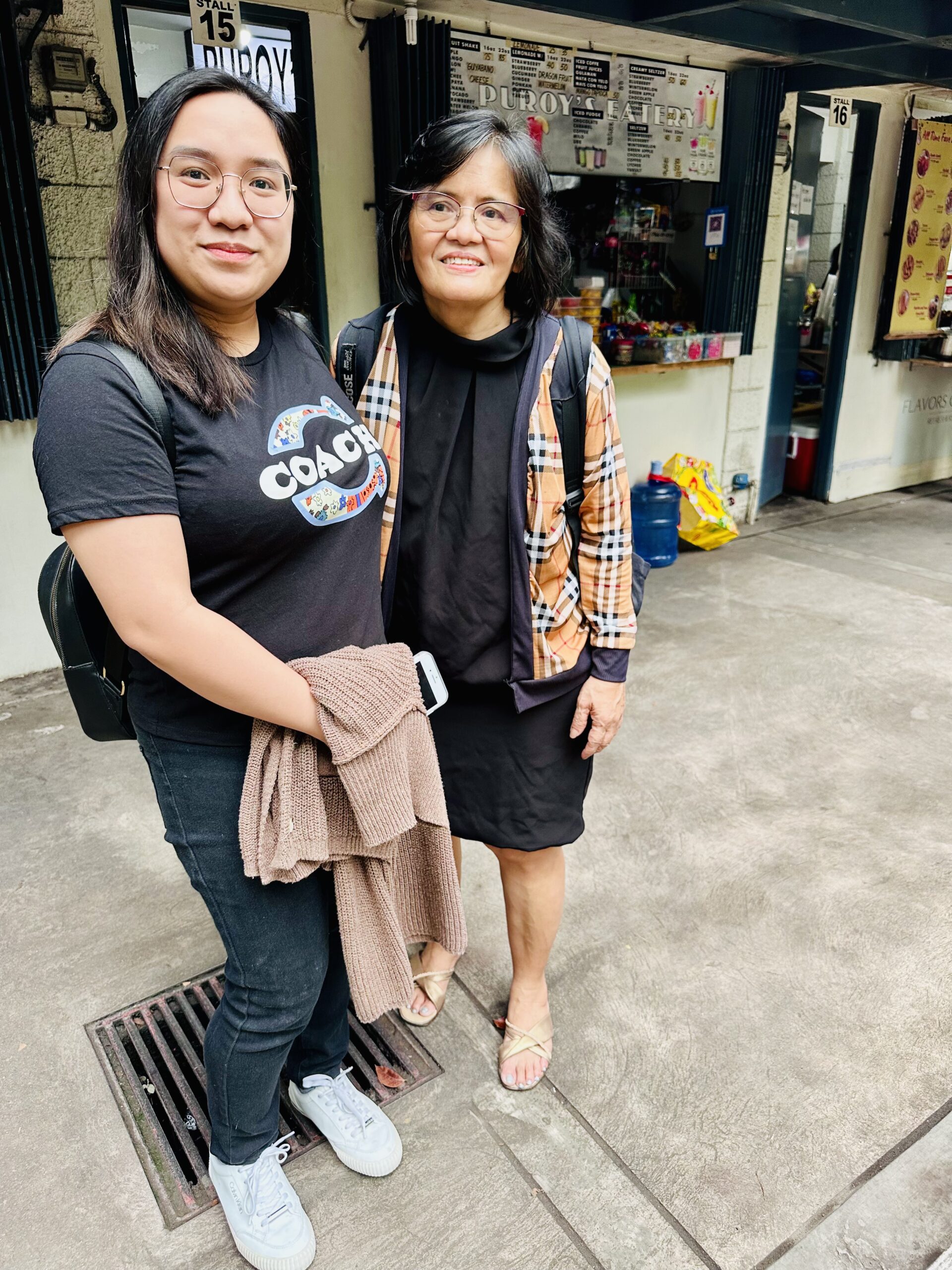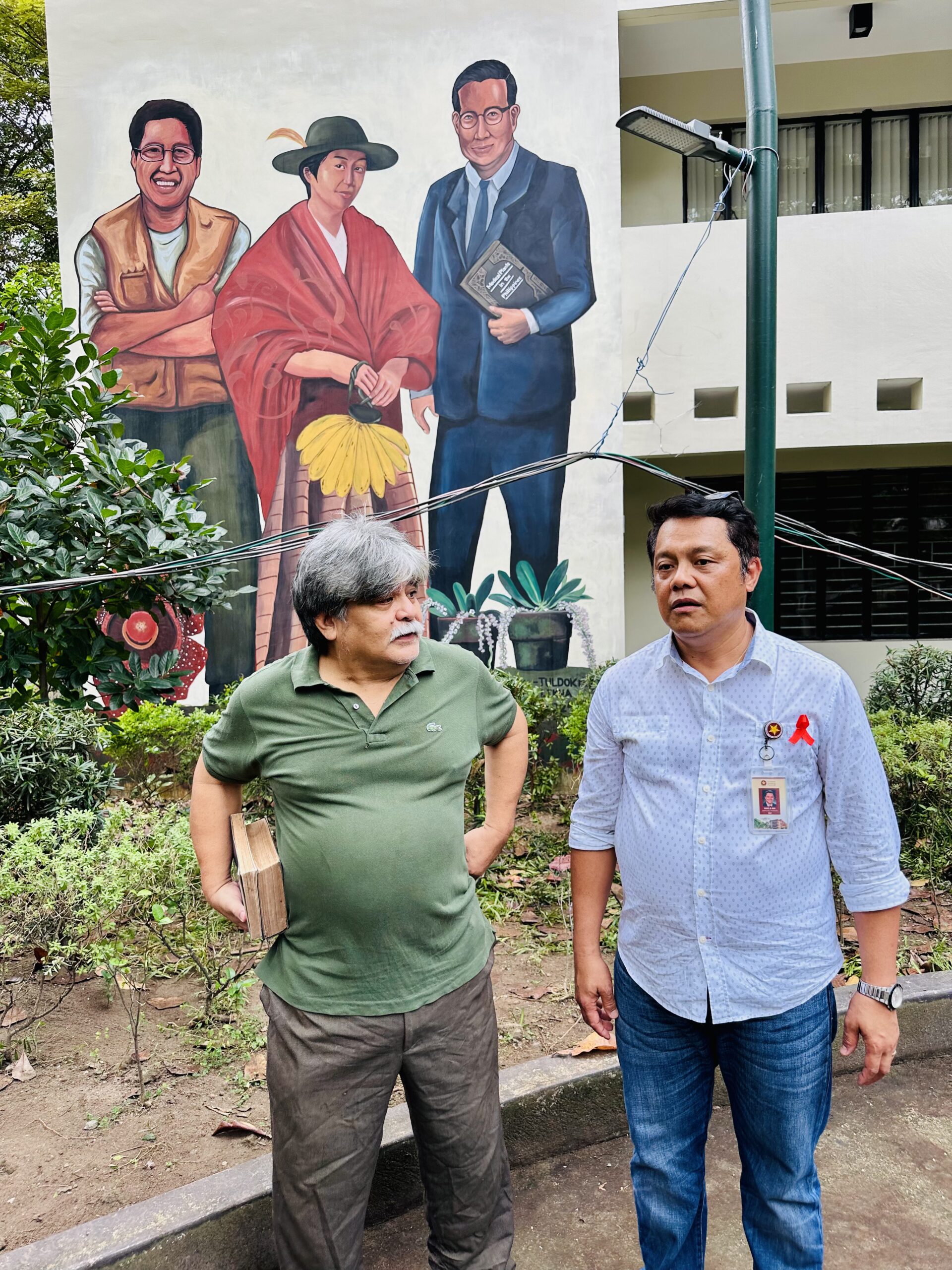The two-storey high mural Mga Rebolusyonaryo was painted by the artists’ group Tuldok as an initiative co-organized by the Constantino Foundation and the Polytechnic University of the Philippines. The project is meant to provoke public debate about the current understanding of Philippine nationalism while depicting the lives of three Filipinos known mostly only within the country’s scientific community.
The painting’s purpose is to challenge tradition, which seems to tell us only those engaged in armed or defiant resistance to an occupying or oppressive power can be considered revolutionaries. But what about Filipinos who lived lives dedicated to giving life? Mga Rebolusyonaryo offers a different angle to questions of heroism and who the country should call revolutionary.
The transdiscplinary nature of the initiative offers students and faculty compelling material for discussion. The painting depicts three towering figures of science. Two are botanists and one is a chemist. One is remembered as “The People’s Biologist” celebrated for his pioneering work and who treated the forest as his university. Another is remembered as a pharmacist, a food technician, and inventor. The third figure is considered an orchidologist esteemed around the world.
Located in one mural is several semesters of learning through subjects that span science, history, politics, aesthetics and the humanities.
Leonard Co, Bayani Co. Maria Y. Orosa, Tagapagligtas. Eduardo Quisimbing, Muhon ng Bayan.
Three Filipinos who have given so much not just to the country but to the world at large.
Leonard Co’s work was so valued numerous plants and animals have been named after him, such as the Rafflesia leonardii depicted in the mural.
Maria Y. Orosa did more than just invent banana ketchup. She cared for the ill and injured and created different ways to advance the nutritional options of her people. She was part of the resistance during World War II, when the Philippines was under fascist Japan’s boot.
Eduardo Quisimbing has several orchids named after him. He has written voluminous studies and as director of the National Museum led the rehabilitation and reconstruction of the country’s Herbarium.
Click here for more information about the country’s science revolutionaries!
